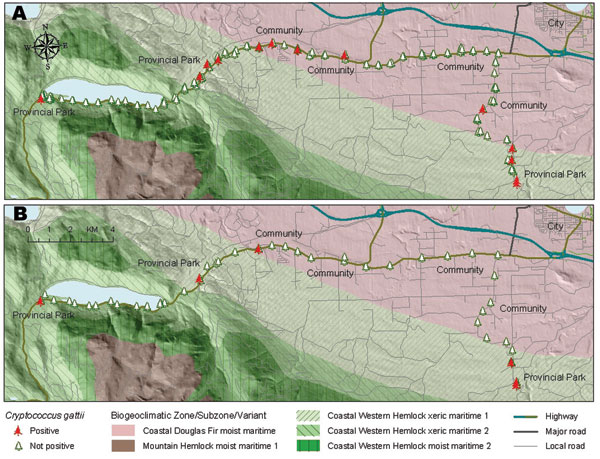Volume 13, Number 1—January 2007
Research
Cryptococcus gattii Dispersal Mechanisms, British Columbia, Canada
Figure 2

Figure 2. Distribution of positive and negative environmental samples for a systematic sampling along a 35-km traffic corridor traversing National Topographic System of Canada grids 092F/06 and 092F/07, highlighting transience of Cryptococcus gattii isolations. A) Sites of initial samples, collected in October 2004. B) Positive sites that were resampled in June 2005.
Page created: June 28, 2010
Page updated: June 28, 2010
Page reviewed: June 28, 2010
The conclusions, findings, and opinions expressed by authors contributing to this journal do not necessarily reflect the official position of the U.S. Department of Health and Human Services, the Public Health Service, the Centers for Disease Control and Prevention, or the authors' affiliated institutions. Use of trade names is for identification only and does not imply endorsement by any of the groups named above.